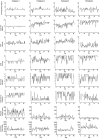Self-Regulatory Processes, Motivation to Conserve Resources and Activity Levels in People With Chronic Pain: A Series of Digital N-of-1 Observational Studies
- PMID: 33013590
- PMCID: PMC7499816
- DOI: 10.3389/fpsyg.2020.516485
Self-Regulatory Processes, Motivation to Conserve Resources and Activity Levels in People With Chronic Pain: A Series of Digital N-of-1 Observational Studies
Abstract
Objectives: Motivational and self-regulatory processes during goal pursuit may account for activity patterns in people with chronic pain. This article describes a series of N-of-1 observational studies designed to investigate the influence of goal-related factors on fluctuations in motivation to conserve resources and objectively measured activity levels.
Methods: Four participants with chronic pain who attended a formal pain management program (PMP; 41-59 years old; three female) were recruited and completed digital daily diaries for 11-12 weeks. The daily dairies, delivered via text message, measured self-regulatory fatigue, goal self-efficacy, goal striving, perceived demands, pain, and motivation to conserve resources. Continuously worn accelerometers measured physical activity and sedentary time. Analyses were conducted individually for each participant. The effects of self-regulatory fatigue, goal self-efficacy, goal striving, perceived demands, and pain on motivation to conserve resources, physical activity and sedentary time were assessed with dynamic regression modeling.
Results: Different patterns of associations between the predictors and outcomes were observed across participants. Most associations occurred concurrently (e.g., on the same day). Perceived demand was the only variable to predict motivation to conserve resources, physical activity, and sedentary time. Motivation to conserve resources and sedentary time were most frequently predicted by goal striving and perceived demand. Self-regulatory fatigue and pain intensity both predicted motivation to conserve resources in two participants and sedentary time in one participant. Motivation to conserve resources predicted sedentary time in two participants.
Conclusion: This study was the first to examine the impact of fluctuations in self-regulatory processes on motivation to conserve resources and objective activity levels within individuals with chronic pain. The results generally supported recent affective-motivational views of goal pursuit in chronic pain. This study demonstrated that N-of-1 observational studies can be conducted with patients during a PMP using digital technologies. The use of these approaches may facilitate the application of personalized medicine.
Keywords: N-of-1; chronic pain; digital health; motivation; self-regulation; self-regulatory fatigue.
Copyright © 2020 McMillan and Dixon.
Figures
Similar articles
-
Telephone interventions for symptom management in adults with cancer.Cochrane Database Syst Rev. 2020 Jun 2;6(6):CD007568. doi: 10.1002/14651858.CD007568.pub2. Cochrane Database Syst Rev. 2020. PMID: 32483832 Free PMC article.
-
The efficacy of motivational counseling and SMS-reminders on daily sitting time in patients with rheumatoid arthritis: protocol for a randomized controlled trial.Trials. 2015 Jan 27;16:23. doi: 10.1186/s13063-014-0540-x. Trials. 2015. PMID: 25623388 Free PMC article. Clinical Trial.
-
The effects on self-efficacy, motivation and perceived barriers of an intervention targeting physical activity and sedentary behaviours in office workers: a cluster randomized control trial.BMC Public Health. 2021 Jun 2;21(1):1048. doi: 10.1186/s12889-021-11083-2. BMC Public Health. 2021. PMID: 34078342 Free PMC article. Clinical Trial.
-
Affect, work-goal schemas, and work-goal striving among adults with chronic pain: a multilevel structural equation analysis.J Behav Med. 2016 Apr;39(2):288-99. doi: 10.1007/s10865-015-9696-4. Epub 2015 Nov 24. J Behav Med. 2016. PMID: 26604006
-
Towards a three-dimensional framework of centrally regulated and goal-directed exercise behaviour: a narrative review.Br J Sports Med. 2018 Aug;52(15):957-966. doi: 10.1136/bjsports-2016-096907. Epub 2017 Aug 23. Br J Sports Med. 2018. PMID: 28835409 Review.
Cited by
-
Slow and Steady But Not Related to HIV Stigma: Physical Activity in South Africans Living with HIV and Chronic Pain.AIDS Behav. 2023 Jun;27(6):1950-1961. doi: 10.1007/s10461-022-03928-7. Epub 2022 Nov 27. AIDS Behav. 2023. PMID: 36436140
-
Perspective: Application of N-of-1 Methods in Personalized Nutrition Research.Adv Nutr. 2021 Jun 1;12(3):579-589. doi: 10.1093/advances/nmaa173. Adv Nutr. 2021. PMID: 33460438 Free PMC article. Review.
References
-
- Azam M. A., Katz J., Mohabir V., Ritvo P. (2016). Individuals with tension and migraine headaches exhibit increased heart rate variability during post-stress mindfulness meditation practice but a decrease during a post-stress control condition – A randomized, controlled experiment. Int. J. Psychophysiol. 110 66–74. 10.1016/j.ijpsycho.2016.10.011 - DOI - PubMed
LinkOut - more resources
Full Text Sources


